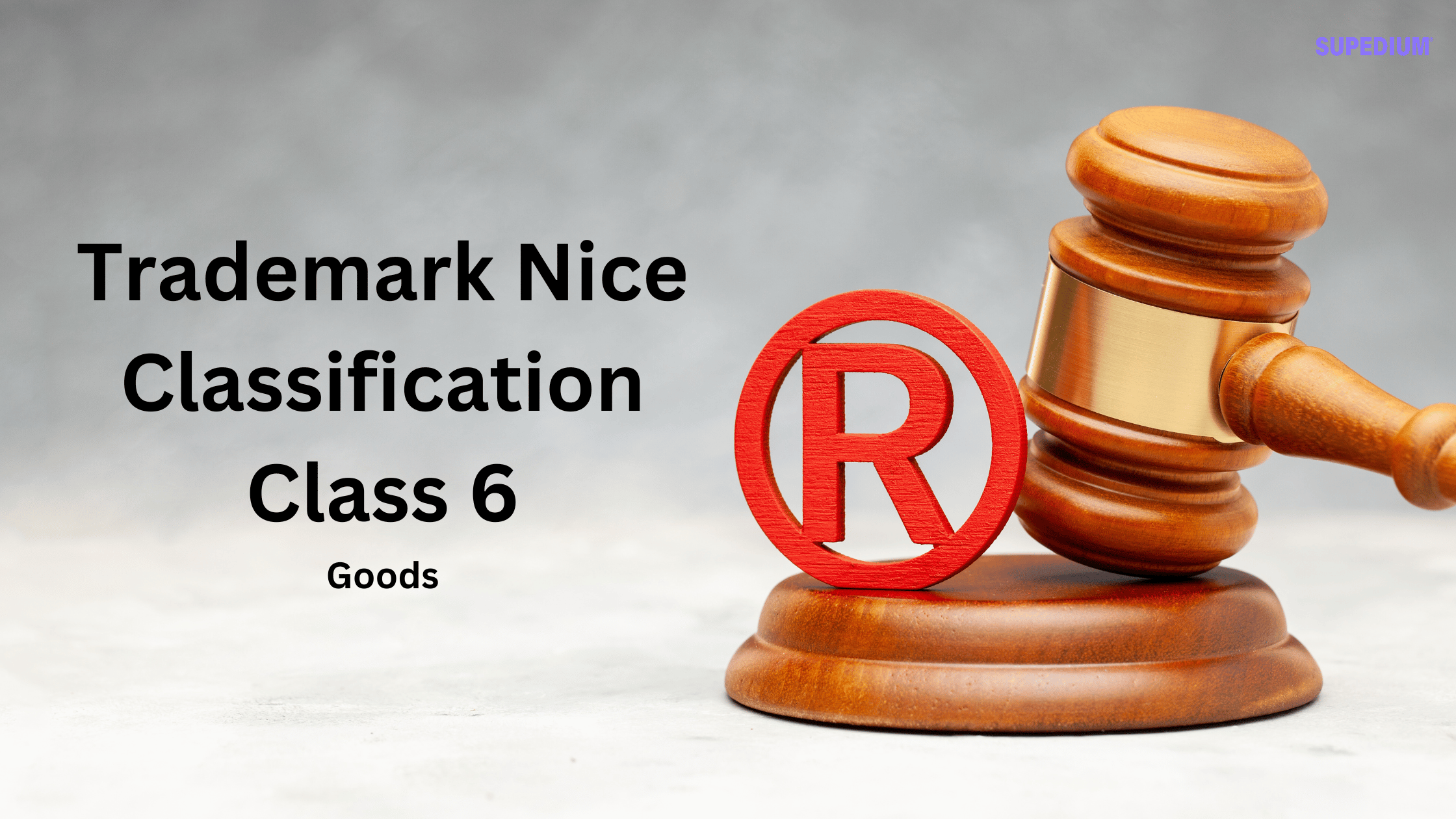Table of Contents
![]()
I. Introduction
The Trademark Nice Classification system serves as an essential framework for categorizing goods and services for trademark registration. Class 6, specifically, is dedicated to common metals and related materials, providing clarity for businesses and legal professionals involved in trademark matters. Understanding this classification is crucial for manufacturers, exporters, and trademark applicants who deal with metal products.
II. Definition and Scope of Class 6
A. Explanation of Class 6
Class 6 primarily encompasses unwrought and partly wrought common metals, along with their alloys and ores. It serves as a vital category for products that are not classified elsewhere but are made from or involve common metals.
B. Types of Goods Included in Class 6
- Metal Materials for Building and Construction: This includes essential components used in various construction applications, such as beams, frames, and roofing materials.
- Transportable Buildings of Metal: This category covers structures that are prefabricated and can be moved, such as portable offices, storage units, and even swimming pools made from metal.
- Non-Electric Cables and Wires of Common Metal: These are metal wires and cables used in various applications, excluding those meant for electrical purposes.
- Small Items of Metal Hardware: This includes essential components like bolts, screws, nails, and fasteners that are crucial for assembling various products.
- Metal Containers for Storage or Transport: Items such as boxes, crates, and barrels made of metal fall under this category, utilized for storage and shipping.
- Safes: Secure storage containers made from common metals designed to protect valuables.
III. Detailed Breakdown of Included Goods
A. Common Metals in Foil or Powder Form
Class 6 includes metals that are processed into foil or powder for further applications, such as in 3D printing. These forms of metals are vital for innovative manufacturing processes, allowing for intricate designs and lightweight structures.
B. Metal Building Materials
This category consists of various metal products used in construction, such as railway tracks, pipes, and tubes. These materials are foundational to infrastructure and construction projects worldwide.
C. Small Items of Metal Hardware
Small items of hardware, such as bolts, screws, and furniture casters, are critical in both manufacturing and DIY projects. These components facilitate assembly and functionality in a wide range of products.
D. Transportable Metal Buildings
Transportable buildings made of metal, including prefabricated houses, animal cages, and portable swimming pools, are versatile solutions for temporary or movable structures. They cater to a variety of needs, from residential to recreational.
E. Miscellaneous Common Metal Goods
Class 6 also encompasses various goods made from common metals that do not fit neatly into other classifications. This includes all-purpose boxes for storage, decorative statues, and works of art, showcasing the diverse applications of metals.
IV. Exclusions from Class 6
A. Goods Not Classified Under Class 6
Understanding what is not included in Class 6 is equally important:
- Metals and Ores Used for Chemical Purposes: This includes materials like bauxite and mercury, which are classified under Class 1.
- Foils and Powders for Painting or Decorating: Such materials are classified under Class 2, as they serve different functional purposes.
- Electric Cables and Non-Electric Ropes Not of Metal: These fall under Classes 9 and 22, differentiating them from metal cables.
- Sanitary Installation Parts and Flexible Tubes: Items classified under Classes 11, 17, and 19 pertain to plumbing and non-metal piping solutions.
- Cages for Household Pets: These are classified under Class 21, indicating their specific purpose and materials.
- Hand Tools and Household Items: Goods classified under Classes 8, 16, 20, and 21 pertain to tools and everyday objects that do not fit within Class 6.
V. Practical Implications of Class 6
A. Importance for Manufacturers and Businesses
For manufacturers, understanding Class 6 is vital for the effective registration and protection of trademarks. This classification helps businesses identify the appropriate category for their products, ensuring they are adequately protected under trademark law.
B. Impact on Trademark Registration and Protection
Trademark applicants must be aware of Class 6 when filing for trademarks related to metal goods. A clear understanding of what is included and excluded can streamline the application process and minimize legal challenges.
C. Guidance for Legal Professionals and Trademark Consultants
Legal professionals and trademark consultants benefit from a comprehensive grasp of Class 6 to advise clients accurately. This understanding aids in navigating trademark registrations, potential conflicts, and enforcement strategies.
VI. Conclusion
Class 6 of the Trademark Nice Classification plays a critical role in categorizing a wide range of common metal products. By distinguishing between included goods and those that fall outside its scope, this classification provides clarity for manufacturers, trademark applicants, and legal professionals. As the market for metal goods continues to evolve, staying informed about the implications of Class 6 will remain essential for effective trademark management.
Share This





Be the first to comment